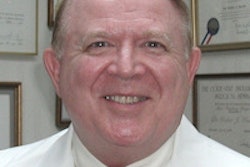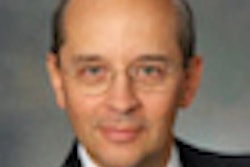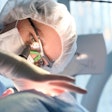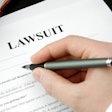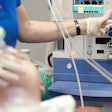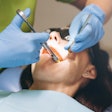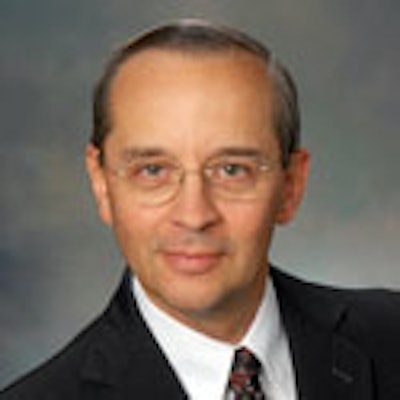
A new editorial in Anesthesia Progress by Editor-in-Chief Joel M. Weaver, DDS, PhD, reminds dentists, oral surgeons, and all dental professionals that patients with obstructive sleep apnea (OSA) are at risk of death not only during procedural sedation but also at home afterward while asleep (Summer 2014, Vol. 61:2, pp. 45-46).
A normal dose in one patient can be an overdose in highly susceptible patients. "Safety first" must be the motto, Weaver advocates.
In an interview with DrBicuspid.com, Dr. Weaver said he had been asked to review a number of cases of patients who had unfortunate outcomes from sedative procedures done by dentists.
 Joel M. Weaver, DDS, PhD.
Joel M. Weaver, DDS, PhD."A number of these patients had known sleep apnea -- very severe sleep apnea in some cases, and [the dentists] proceeded to do their usual sedation procedure," he said.
In the editorial, he wrote that most drugs have, in their U.S. Food and Drug Administration (FDA)-approved labeling, a recommended dose for adults and also multiple age- or weight-based recommended doses for children. Many drugs have an FDA maximum recommended dose (MRD) as well. This recommendation means there are insufficient data on safety and efficacy, or that there are sufficient data to suggest that administering or prescribing above that limit "markedly increases the risk of serious side effects such as overdose toxicity."
Neither the recommended dose nor the maximum recommended dose is absolutely safe for everyone, Dr. Weaver said. The dentist must understand this and take into consideration all the patient variables that might make the MRD, or even the recommended dose, unsafe.
Average doses of sedation might work quite well in healthy people but not so with patients with severe obstructive sleep apnea, he noted.
"When you find a patient with a severe obstructive sleep apnea, it's not unusual for them to have serious airway obstruction during sedation," Dr. Weaver said. "If the practitioner isn't trained and experienced to manage the airway with a variety of advanced techniques, the safe thing is to decide, 'This isn't a patient I should be sedating.' "
The following patients are among his (not all inclusive) list of susceptible patients:
- Smaller females and children
- Those patients with unknown genetic factors that slow drug biotransformation or have altered drug receptors
- Patients who have other drugs in their system that are known or sometimes unknown to the dentist -- These patients can have additive effects.
- Medically compromised, debilitated, and elderly patients -- A large number of these patients can also exhibit drug toxicity from even small doses.
Dr. Weaver's '"bottom line" is that elderly, debilitated, and medically compromised patients, including those with diagnosed as well as undiagnosed severe obstructive sleep apnea, are at increased risk for dying during procedural sedation and afterward at home during sleep when sedatives and opioids can still exert depressant effects on the central nervous system.
In the cases mentioned in the Anesthesia Progress editorial, practitioners unfortunately proceeded with sedation with tragic outcomes. Dr. Weaver cited the example of triazolam (brand name Halcion). The FDA's maximum recommended dose is 0.5 mg, Dr. Weaver noted and then cited the specific warnings on the label.
"A dose of 0.5 mg should be used only for exceptional patients who do not respond adequately to a trial of a lower dose because the risk of several adverse reactions increases with the size of the dose administered," he stated. "A dose of 0.5 mg should not be exceeded."
Triazolam is indicated only for short-term insomnia and is no more or less safe when used off-label for procedural sedation at the recommended doses, Dr. Weaver noted. If an overdose toxicity occurs and the patient is harmed in any way, the practitioner "may not have sufficient scientific evidence to demonstrate that the decision to use that higher dose was safe, justified, and within the standard of care," he wrote.
How does a practitioner proceed?
The primary objective of an individualized sedation is patient safety, not ideal clinical efficacy (i.e., the patient not moving during the clinical procedure), Dr. Weaver wrote.
He advocates proceeding only when a full and carefully screen for undiagnosed OSA has been completed. He recommends using the STOP-BANG scoring system questionnaire (see chart below), a thorough past medical history, and an evaluation by the dentist augmented by additional information supplied by the patient's medical team.
The STOP-BANG system consists of Snoring, Tired, Observed, Pressure, BMI (body mass index), Age, Neck, and Gender.
| STOP-BANG system | |
| Symptom | Definition |
| Snoring | Loud enough to be heard through closed doors? |
| Tired | Often feel tired, fatigued, or sleepy during daytime? |
| Observed | Has anyone observed you stop breathing during sleep? |
| Pressure | Do you have or are you being treated for high blood pressure? |
| BMI | More than 35 kg/m2 according to BMI chart? |
| Age | Older than 50? |
| Neck | Circumference greater than 40 cm? |
| Gender | Male? |
In his editorial, Weaver defined a high risk of OSA as a patient who answered yes to three or more items. Those who answered yes to fewer than three items are considered low-risk.




